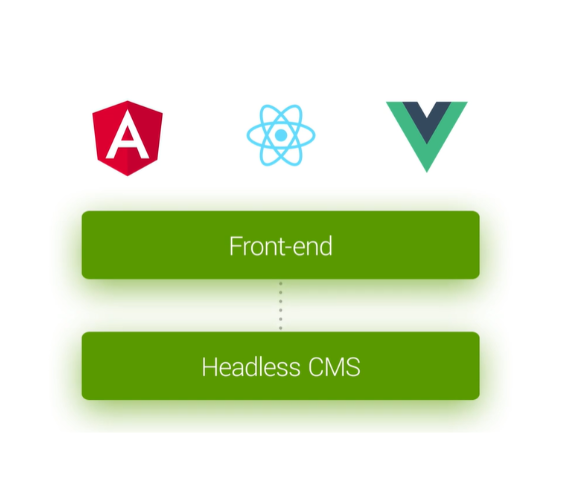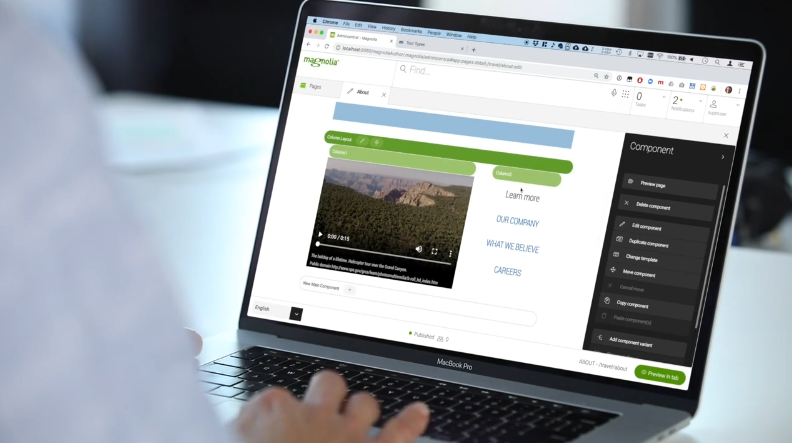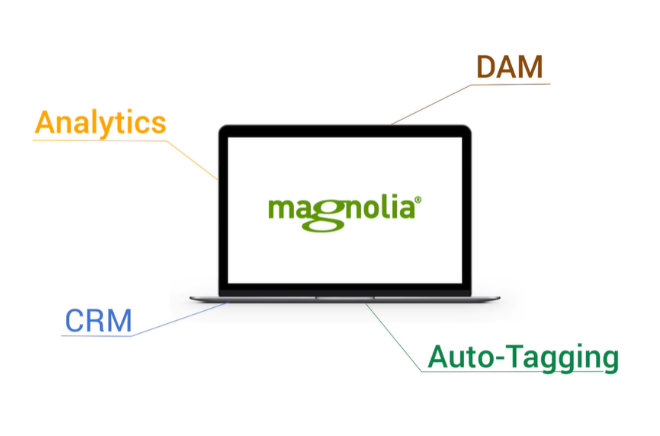BLOG
In today's evolving digital landscape, content management systems (CMS) have developed into crucial tools for enterprises and industries. The way that organizations create, manage, and distribute content has entirely transformed thanks to these flexible platforms.
Additionally, they have been crucial in assisting them in enhancing their internet presence, engaging audiences, and achieving commercial objectives.
CMS platforms, which give organizations the ability to efficiently organize, publish, and update their digital content without requiring in-depth technical knowledge, are the basis for websites, intranets, and online apps.
In my time of internship at Codeit, I had to meet with Magnolia Headless, one of those CMSs. What makes this CMS unique, and what does "headless" actually mean?
The term "headless" in the context of content management systems refers to a decoupled or "headless" CMS architecture. In a traditional CMS, the content management system is tightly integrated with the presentation layer (the "head") of a website or application.
In contrast, a headless CMS separates the content management capabilities from the presentation layer. This separation allows for more flexibility, scalability and the ability to deliver content to various channels and devices, such as websites, mobile apps, IoT devices, and more.

Magnolia’s Headless CMS integrates with Single Page Applications (SPAs), and Progressive Web Apps (PWAs) built with any frontend framework such as React, Angular, Vue, or meta frameworks like Next.js, Gatsby, or Nuxt.[1]

As a beginning software engineer, I found this technology to be incredibly adaptable.
I worked on the corporate website as a front-end developer, and I was not familiar with Magnolia or any other CMS system.
We just utilized the APIs to obtain the desired content. This decoupled approach provides the flexibility needed to be always ready to integrate other tools and platforms as well.
Additionally, it offered us the opportunity to choose the frontend technology that best suits our requirements. You can read my colleague blog post about the frontend frameworks.
The next advantage Magnolia offers is authoring capabilities. The administrative interface is user-friendly, making it simple for authors to create and manage material.
Thus, we were able to test the components we worked on, as well as create, update, and view them exactly as they would look to the user.
We can also see how they look on various devices thanks to the preview feature.

I also had the opportunity to contribute to the CMS's back-end implementation.
Magnolia has the benefit of being open source, allowing us to modify and enhance the CMS to suit our unique needs.
Although it is fairly simple to integrate with other data and microservices, managing with this network of tools can occasionally be challenging and perplexing.
Magnolia offers a strong IUX (Interapable User Experience) that embeds control from the integrated system directly into the Magnolia UI that shows information and links content.
I was able to include SEO on our website. It is a very effective tool used to evaluate and guarantee the greatest content performance, allowing the search engines to give our website the highest potential ranking.

Conclusion
The use of Magnolia Headless CMS marks a significant advancement in the field of content management systems. It enables enterprises to provide content smoothly across a variety of channels, adapt to fast changing digital environments, and deliver engaging user experiences thanks to its strong features and flexibility.
Magnolia Headless CMS's user-friendly design also makes it simpler to create and modify content, making it useful by both technical and non-technical people. It provides a cooperative nature.
Working in multidisciplinary teams that comprise content editors, developers, designers, and marketers is a significant bonus for creating engaging and user-focused digital experiences.
In summary, Magnolia Headless CMS empowers organizations to create, manage, and deliver content efficiently and effectively in a rapidly evolving digital world.
Its flexibility, scalability, user-friendliness, and commitment to security make it a compelling choice for businesses seeking to enhance their online presence and engage their audience across diverse channels.
Magnolia Headless CMS is positioned to remain a useful tool for content management and delivery as the digital landscape changes, and businesses should consider whether they need it for their digital presence.
Reference